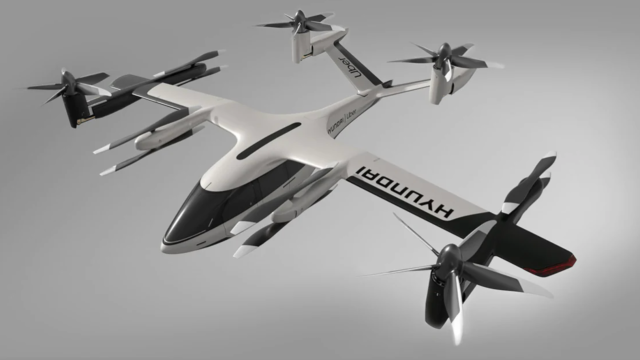Hyundai is certainly looking toward the future these days. Wednesday we reported that the South Korean automaker is finalising a deal to buy our future robot overlords Boston Dynamics for just under a cool billion dollars, and now Hyundai has reaffirmed its dedication to what it calls urban air mobility vehicles. Whatever Hyundai’s big plans, it involves taking to the sky in eight short years.
Roadshow reports that the company already announced it was planning a fleet of UAMs with Uber at the very last big pre-COVID tech event, CES 2020. Partnering with Uber Elevate at the time, the five-person dronelike vehicle called the S-A1 was touted as the future of urban travel.
Uber won’t be a part of that future now, as this week it exited both the self-driving and flying vehicle games, but Hyundai is full-steam-ahead with UAM plans:
In 2026, however, Hyundai said it wants to take cargo into the skies locally. The automaker has a flying taxi suited for cargo equipped with a hybrid powertrain, so not all-electric like the 2028 version. This vehicle will also fly autonomously, according to the company, as it specifically called out the vehicle will be entirely uncrewed. It’s another high-altitude goal, but this year, Hyundai’s made it clear it’s ready to start looking into alternatives to traditional vehicles. The company also purchased Boston Dynamics, famous for its creepy robot dog, it was announced Wednesday. The buy comes hot on the heels of concepts for Hyundai’s “walking cars” — part standard vehicle, part Transformer.
If Hyundai meets its goals this decade, the 2030s will be far more revolutionary. Its UAM program will expand to regional hubs to take passengers and cargo on longer distance trips that could be as simple as calling for a flying taxi from an app. One day, hydrogen fuel cells may even power these vehicles.
If you’ve been here before, you probably know we are of the humble opinion that flying cars probably aren’t going to happen. What are marketed as “flying cars” tend to be aircraft, nothing more. It’s not a flying car if you can take off and land only from an airport, for instance. Uber developed several of these drone-like transportation devices over the years but really, they require not drivers, but pilots.
Pilots who will need training and certification and re-training and re-certification, because humans can barely handle driving in two dimensions, let alone flying in three. Hyundai’s current concept includes room for a pilot, of course. Maybe with its newly acquired high-tech company, it can develop the UAMs into self-flying drones, which is the only way I can see anything close to the flying taxi model working in the real world. It’s perfect really, a self-flying drone big enough to carry people isn’t going to run over anyone or get confused at crosswalks 18.29 m or so in the air, and it takes the scary performance of flying out of the hands of all-too-human pilots.
